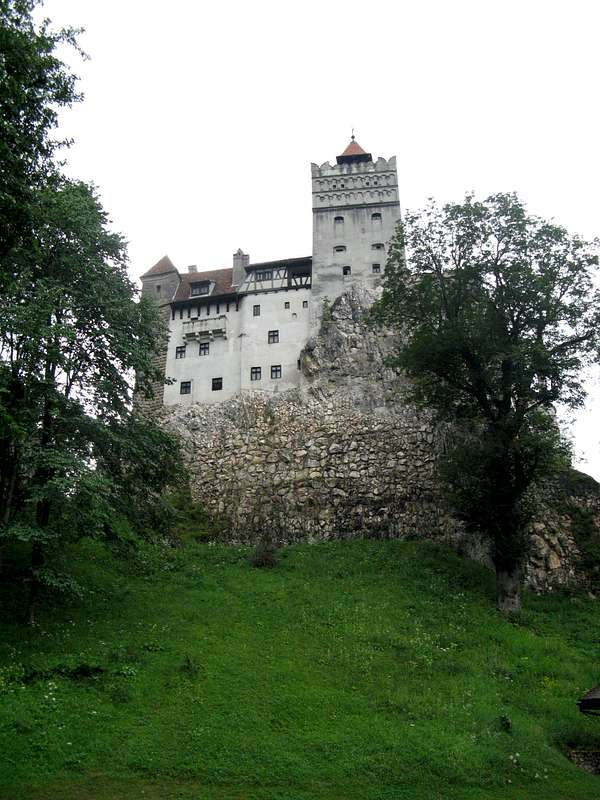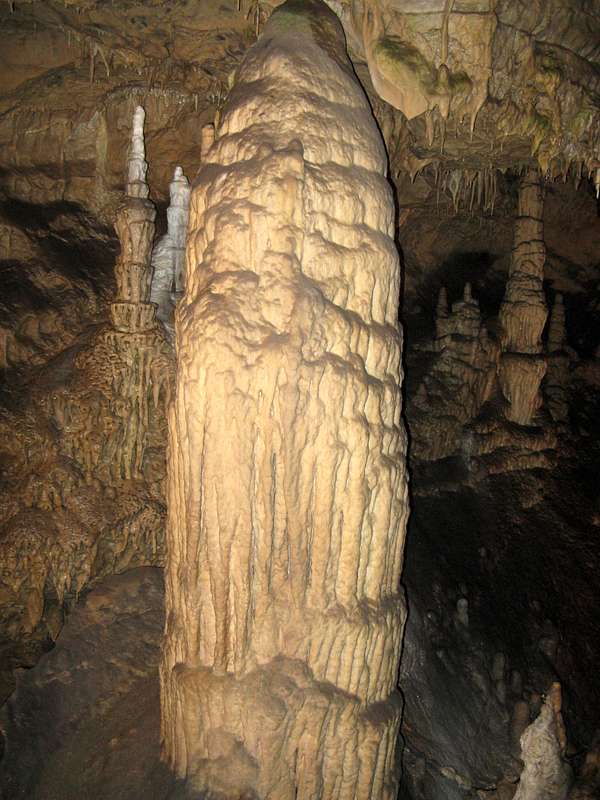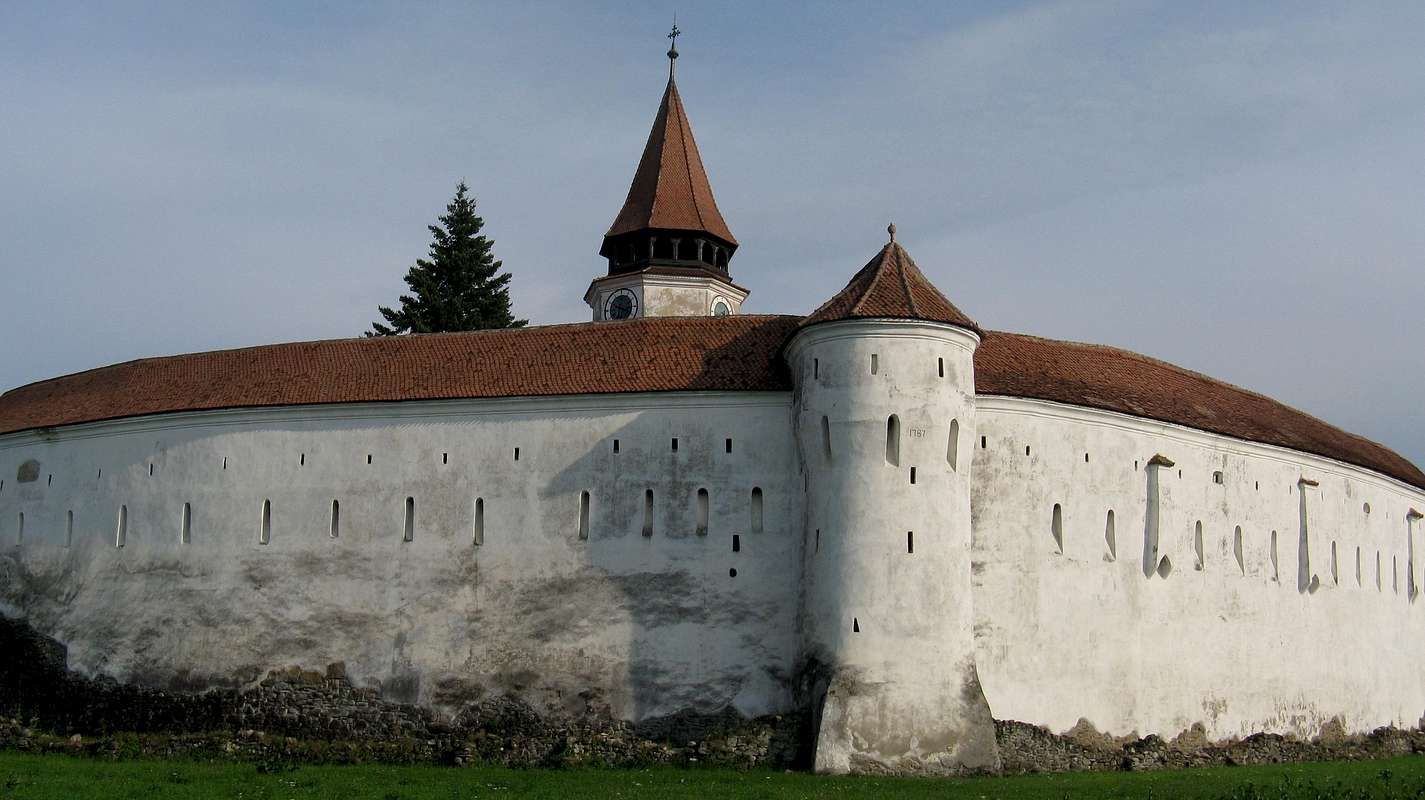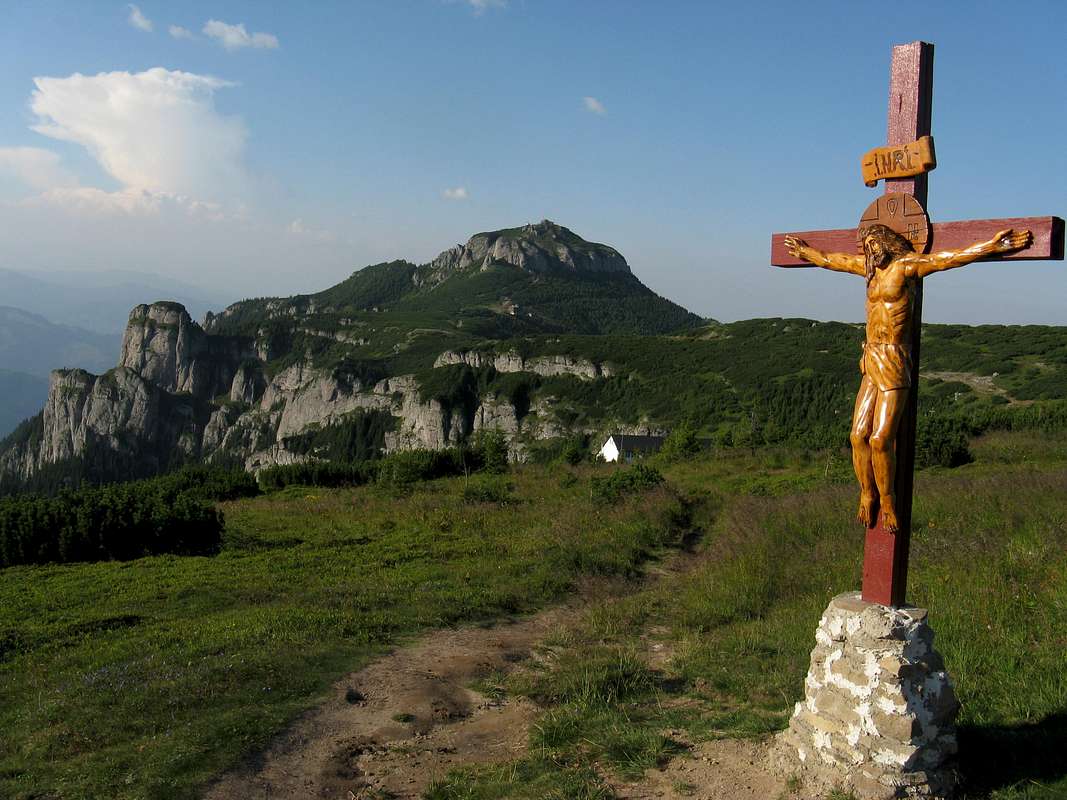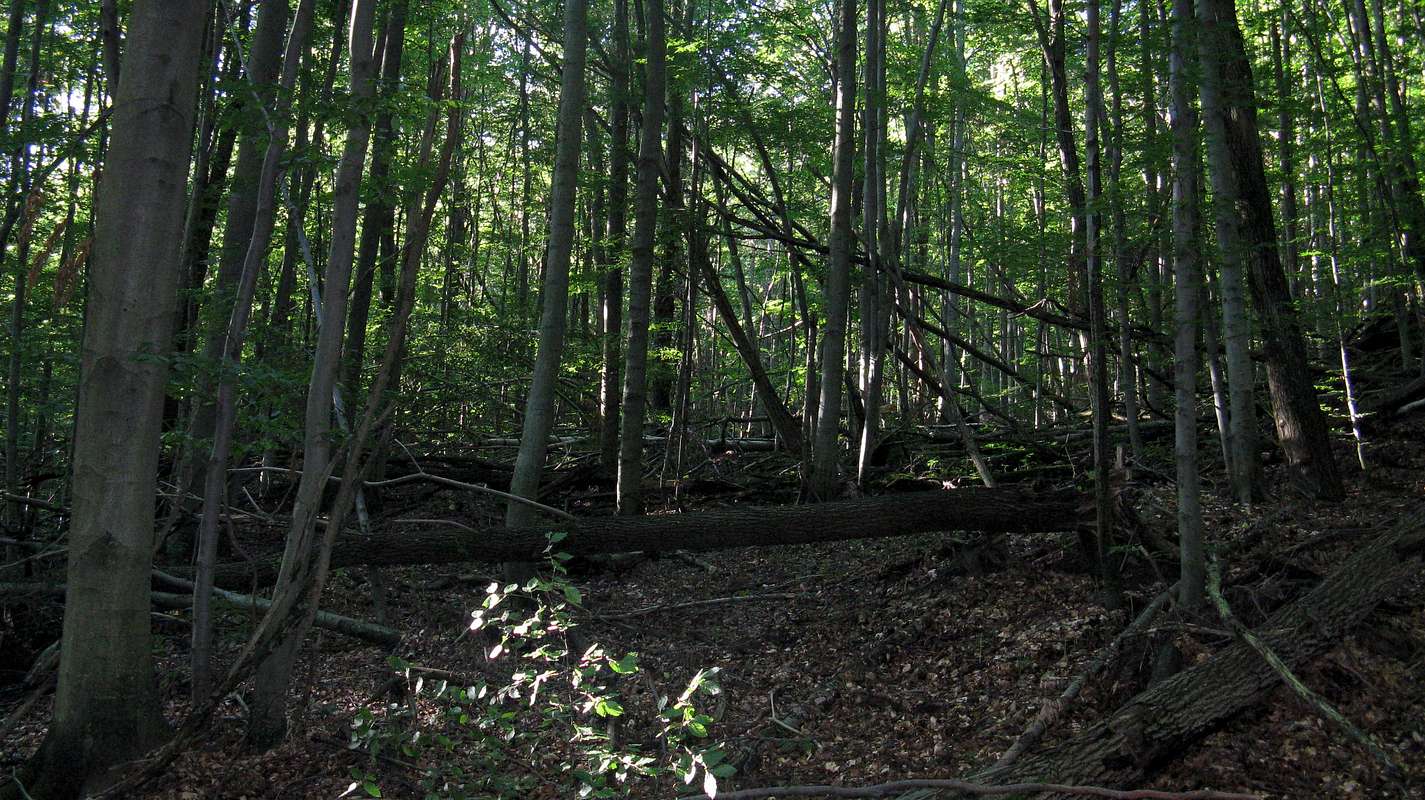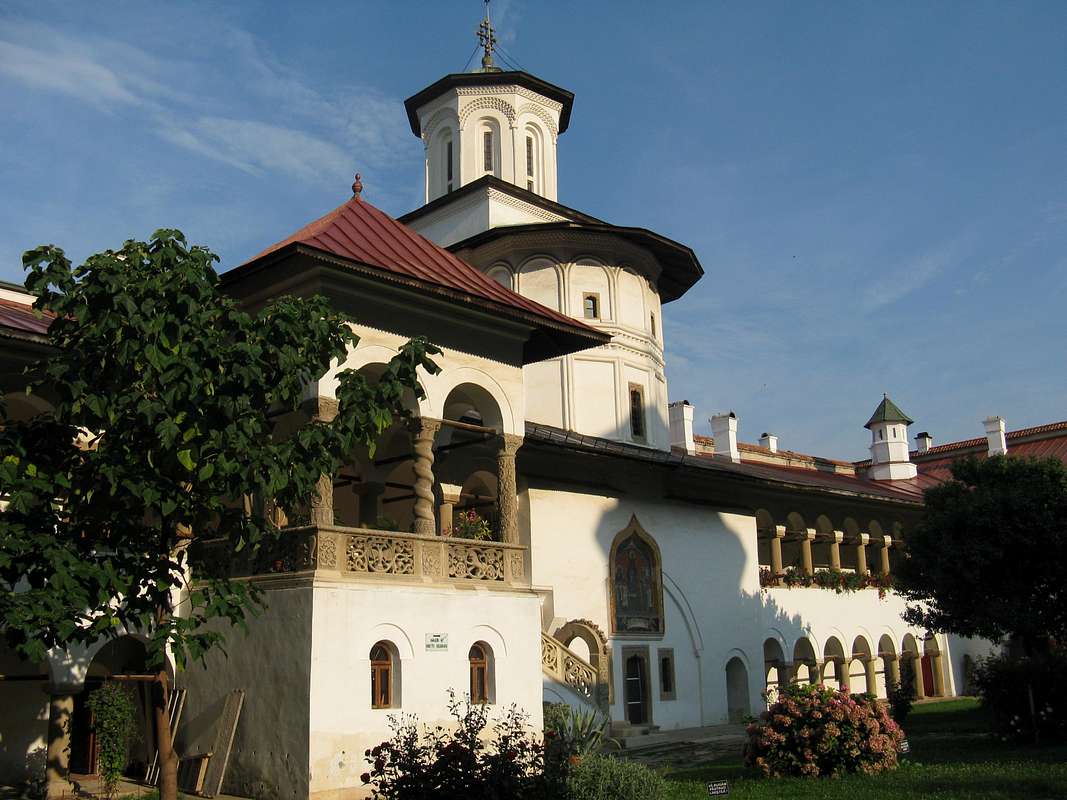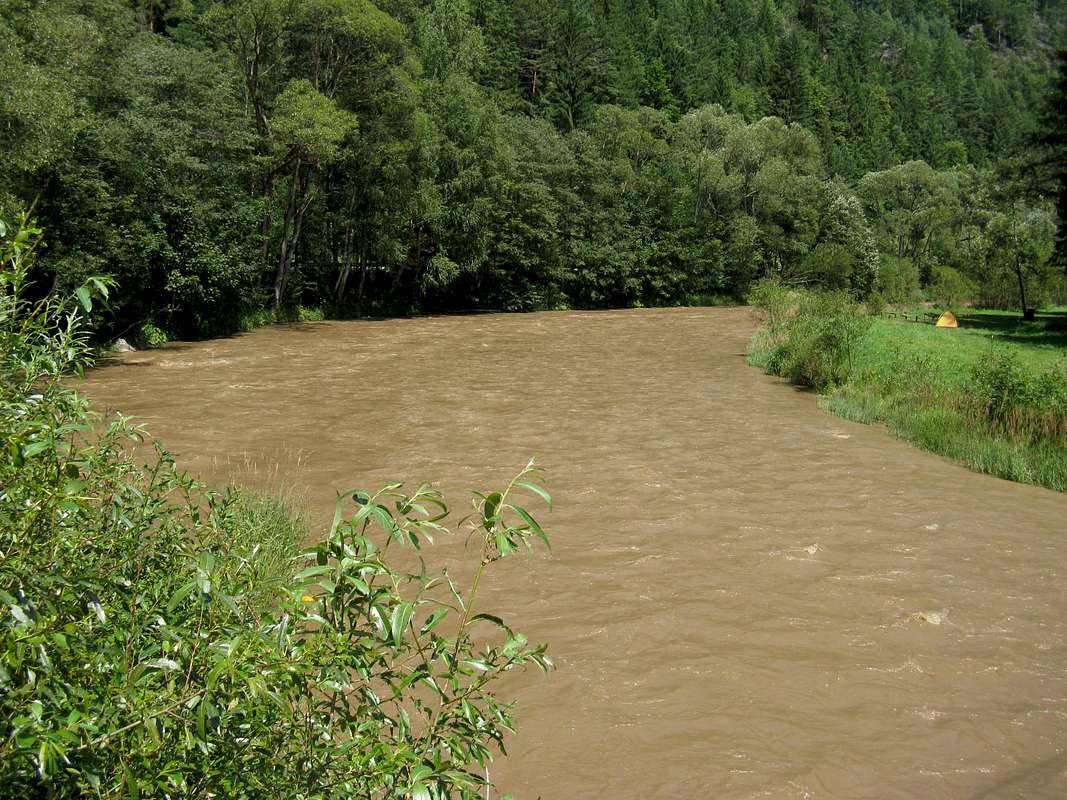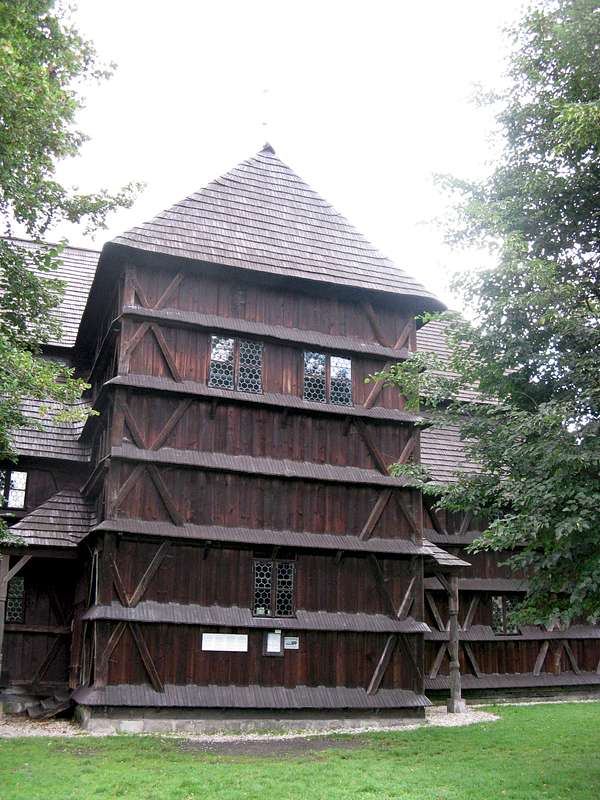|
|
Custom Object |
|---|---|
|
|
Custom object |
Warning :-) construction works under way
Private property of a Carpathian team - no trespassing, no voting.&#;
ă
â
î
ş
ţ
&#;
&#;
&#;
&#;
&#;
&#;
&#;
&#;
&#;
&#;
&#;
&#;
Carpathian adventure 2014
From the Bešeňová travertine hill to the Belianska cave - the only one opened to a public in the Bela Tatras. From the Articular church in Kežmarok - a UNESCO's World Cultural Heritage via Lubovniansky Castle to the ruins of Šariš Castle. Hronsek Wooden Church - a UNESCO's Cultural Heritage and Badín Primeval Forest
Polish part of the High Tatras.
Polonyna Pishkonya in Transcarpathia.
From the Zugreni gorges via the Ceahlău Massif with legendary conglomerate formations to Mud Volcanoes - being one of the most spectacular Carpathian wonders. Excursions of Prejmer Fortified Church - a UNESCO's World Cultural Heritage, Râşnov Citadel and famous Dracula's Castle in Bran resort. From Dâmbovicioara canyon via the Horezu Monastery - a UNESCO's World Cultural Heritage to remote Godeanu Mountains.
Let’s set out on an enthralling trip through the most extensive mountainous area on the old continent…
Bešeňová travertines
A short look at this monument of nature protecting deserted quarry, previously known for its yellow travertines.
Belianska cave
A visit of Belianska cave - the most beautifully decorated cave in the Tatras. This cave was equipped with electric lighting in 1896 as one of a few caves in the world.
We admire flowstone waterfalls, pagoda-like stalagmites and small lakes during our more than 1 km long underground excursion featuring eight domes: Dome of explorers, High dome, Palm hall, Chamber of bandit, Dome of large limestone waterfalls, Gallery, Music hall, White dome.
Polish Tatras
Captivating exhibition showing historic snapshots of the High Tatras. An extremely arduous overnight ascent from Zakopane to Zawrat pass. Morning panorama of the north faces of the Slovak part of the High Tatras.
Eagle Path - perhaps the most difficult hiking trail in the Carpathians. Waymarked with red stripes, this trail is one-way between Zawrat Pass and Kozi Wierch. Numerous exposed sections fixed with chains. Reaching Kozia Przełęcz which ranks first of all the cols in fatal accidents. Decision to descent via yellow striped trail to the Valley of the Five Polish Tarns. Welcome rest enriched with the observation of chamois. Blue striped trail along Big Polish Tarn - the deepest (80m) and the longest (1km) lake in the High Tatras.
Short look at nearby Siklawa - the most abundant and the highest (70m) waterfall in the Polish Tatras.
Lenghty descent towards Morskie Oko - the largest (35 ha) tarn of the Tatras as well as the entire Carpathian arc. 3 km long circuit with a look at Czernostawianska Siklawa.
System of three cascades (120m) named Wodogrzmoty Mickiewicza surrounded by arola pristine woodland.
An endless valley of the Bialka river. Reaching Palenica Bialczanska after almost 20 hours of hiking in the Polish Tatras.
Slovakian Castle Hills
Video about Lubovniansky Castle |
An excursion in Lubovniansky Castle forming a large complex of interesting expositions. The system of internal walls allocates four
courtyards, three palaces, two bastions and gates as well as one tower. We have a look at the following components: Baroque bastion, Renaissance tower with Boner's gate, Baroque palace, The western renaissance bastion, Baroque chapel, Renaissance palace and Gothic tower.
Built in 1245 on andesite hill, Šariš Castle belongs in the largest medieval fortresses of Slovakia (4,5 ha).
Polonyna Pishkonya
Located in the northern part of Transcarpathia, Polonyna Pishkonya has about 7 km long main ridge oriented NW – SE, but the eastern ridge runs SSW, thus forming huge arc rising above the valley of Terebla river.
Video TR |
I follow red striped trail winding along Terebla river. The checkpoint of Synevyr National Park and springs of clear water. I pitch my tent on the shore of Ozertse tarn.
A morning ascent at timberline with a catch of nutcracker. I reach signboard named Pishkonya during sunrise. The main ridge trail towards the first summit of Mala Gropa with a cross. A look downhill to Kolochava village. I climb the Jasenovec and Velyka Gropa summits. W face of the highest summit of Polonyna Pishkonya named Nehrovets (1709m).
Fine views of Gorgany in the north. A tiny cirque in the NW face of Nehrovec with small tarn. Carnation and aconite species of mountain flora. I reach the last summit of Pishkonya called Horb. It is situated about 1 km east off Nehrovec and we can find tiny tarns on its NE spur. Time-lapsed shot of light and shade enveloping Hrebin ridge. On my way back I observe a raven and a frog as well. I say goodbye to Ozertse and continue losing elevation. The interpretative trail winding through a patch of pristine woodland. Crossing the bridge by former museum of rafting. I follow yellow striped trail along Ozerianka river, passing by one of the Bunkers of Arpad's line. I come back to Directorate of
Synevyr NP with information boards.
Zugreni Gorges
Zugreni Gorges are located in the northern part of Bistriţa Mountains about 20 km east off Vatra Dornei resort. This natural preserve was established in 1973. It protects 3 km long and 200 m wide canyon with meanders of Bistriţa river surrounded by steep cliffs up to 300 m tall.
Video TR |
I pitch my tent near Zugreni hut situated in the center of namesake gorges right on the bank of Bistriţa river.
A board in the beginning of Zugreni gorges. The first cliff called Colţul Acrii. Huge 180° meander of Bistriţa river. A rest place with signpost to Rarău – Giumalău Mountains. I pass by the crag named Piatra lui Osman. A colourful alpine plant. A look back to Zugreni hut with Ţepuşelor massif in the background. Steep slopes on the opposite bank of Bistriţa river. Captivating rock outcrops called Râpa Scara.
120° meander of Bistriţa river with cliffs named Grindul Puşcaţei. Carpathian bellflower. The last cliffy wall called Stânca Coifului. The last meander and a rest place. A board marking the end of Zugreni gorges.
Ceahlău Massif
Also nicknamed as the Olympos of Moldova, the Ceahlău Massif represents one of the most spectacular mountain units in the Eastern Carpathains.
I cross the viaduct with fascinating views of 23 m tall Piatra Teiului surrounded by the waters of Izvorul Muntelui reservoir - 35 km long being one of the largest in Romania. I arrive at well known mountain resort named Durău - a home for an orthodox monastery. The entrance to Ceahlău National Park. I follow red cross trail and start one of the most arduous ascents I have ever experienced via Cascada Duruitoarea - one of the most impressive waterfalls in Romania - with wooden ladders enabling access over the exposed sections. I go on ascending the steep slope offering first views of Piatra Ciobanului.
I reaching the edge of a plateau in the central part of the Ceahlău Massif, passing by strictly protected scientific reserve and heading towards another peculiar rock formation called Piatra Lăcrimată, resembling weeping human face. A wooden cross with Toaca - Piatra Ciobanului massif in the background. I pitch my tent at the only designated campsite in the Ceahlău massif, located at Piatra Lata din Ghedeon. I have two-hour long conversation with a lone Carpathian soul (CZ).
The next day I climb the second highest peak named Toaca with meteo station on its top. I stare at Panaghia - the most emblematic rock tower situated half a kilometre NE. I lose elevation in order to have a look at spectacular needle - Cuşma Dorobanţului - resembling an armed soldier with a cap.
On my way back to Dochia hut, I have an encounter with a viper seen at red striped trail. Sunlit parts of unusual rock formations named Castelul, Faraonul, Vulturul lui Traian and Santinela. Slowly losing elevation to Detunatele - two crags named Cetăţuia si Călugarii. I follow an interpretative trail, shot an edelweiss and learn about the Ceahlău conglomerate. I reach Poliţa cu crini - a characteristic ledge marked by belts of 30 m tall larch trees.
In the evening I have a look at massive block called Gardul Stănilelor, wooden church in the heart of the Ceahlău Massif and substantial spring named Izvorul Rece.
Sunrise over Izvorul Muntelui reservoir. A traverse of Ocolaşul Mare - the highest point, surrounded by cliffs on three sides which boast so called Coloana Dorică, being in stark contrast to table-like grassy N face. I have a conversation with three RO hikers and we are lucky to observe a herd of chamois. I pass by twin-peaked rock towers named Clăile lui Miron. A steep descent to Poiana Maicilor affording the best view of Ocolaşul Mic - a spectacular gallery of limestone and conglomerate cliffs. I say goodbye to the Ceahlău Massif considered to be the homeland of dacian god Zamolxis and finally reach Izvorul Muntelui hut.
Mud Volcanoes
Video |
Small Paclele (Vulcanii Noroioşi de la Pâclele Mici
 ) are located at 341 m altitude with an area of 16,5 ha. This geologic preserve shelters the most distinctive forms of mud volcanoes with larger cones. Their height varies between 2 and 6 meters. Although the edges of craters seem solid, they are surrounded by slowly moving flow of mud. Due to this fact, these craters often join together forming huge vents of volcanoes sporadically reaching 3 meters diameter.
) are located at 341 m altitude with an area of 16,5 ha. This geologic preserve shelters the most distinctive forms of mud volcanoes with larger cones. Their height varies between 2 and 6 meters. Although the edges of craters seem solid, they are surrounded by slowly moving flow of mud. Due to this fact, these craters often join together forming huge vents of volcanoes sporadically reaching 3 meters diameter.Great Paclele (Vulcanii Noroioşi de la Pâclele Mari
 ) are situated 2 km NE off Small Paclele. Their altitude is 322 m and area 22 ha. The name of this nature reserve originates from the three main volcanoes and volcanic plateau in the center.
) are situated 2 km NE off Small Paclele. Their altitude is 322 m and area 22 ha. The name of this nature reserve originates from the three main volcanoes and volcanic plateau in the center.Prejmer Fortified Church
A visit of Prejmer Fortified Church - a UNESCO World Cultural Heritage and one of the most important medieval historical monuments in Transylvania. It has the most fortified walls of any of the fortified churches of Transylvania. The height of ring walls is between 12 – 14 metres, with thickness of up to 5 metres.
The construction of the Church of the Holy Cross began in 1218 by the Order of the Teutonic Knights. Inside the fortress complex, there are over 270 rooms for refuge and storage of provisions, making it one of the most advanced systems of its kind. It preserves ethnological and historical values illustrating the life of multi-ethic community in permanent exhibition.
Râşnov Fortress
Situated in the vicinity of Brasov between Bucegi and Piatra Craiului mountain ranges, Râşnov Fortress is one of the best preserved peasant citadels in Transylvania. This historical monument and landmark of Romania is located at the rocky hill towering more than 200 meters above the town of Râşnov.
Video |
Râşnov citadel is composed of two courtyards. The exterior courtyard is located in front of the eastern wall, edged by a fortified wall and fitted with square tower. The walls are 5 meters tall and the widest part is constituted by the south wall which is about 1,5 meters thick. The interior courtyard represents the inhabitable area having better protection. The strongest fortifications are found in the eastern side of the citadel. Fortified element defending the gate – barbican – was constructed in the 16th century. It belongs in the smallest of its kind in Transylvania.
Râşnov fortress is a national monument overlapped on a settlement of Neolitic and Bronze Age and further on over Cumidava Dacian fortress. Strategically situated by trading route connecting Transylvania and Walachia, this citadel was designed as a place of refuge over the extended periods of time. Nowadays this ancient fortress has been restored to its former glory.
Bran Castle
Surrounded by an aura of mystery and legend the 60m tall Bran Castle owes its worldwide fame to the myth created around Bram Stoker’s Dracula.
I enter the Guards room and admire documentary exhibition including the history of Bran Castle, a billboard with portraits of Transylvanian leaders and reproductions of vintage photos of Princess Ileana and its children – Dominic Habsburg-Lothringen, Maria-Magdalena Holzhausen and Elisabeth Sandhofer.
The first floor lobby follows. During the interwar period it was arranged as the apartment of Queen Mary of Romania. Nowadays we can see pieces of furniture from 18-19th centuries, tin box decorated in brass and artistic paintings as well.
The next room was arranged as The bedroom of Queen Mary of Romaniaduring the interwar period. From 1938 until the end of 1947 it belonged to Princess Ileana of Romania.
I pass through the Crossing room and enter the Room of the Castellans. There are exposed panels containing informations about castellans, the oath of the chief magistrate, a table in late renaissance style with seats from the 19th century, a bronze sculpture made by Princess Ileana of Romania with a portrait of judge and castellan Lucas Hirscher. Big salon follows with a set in Baroque style, a gaming board, traditional carpets from Wallachia and a Romanin Icon. Then we enter the Secret staircase and go on ascending the stone steps which connect the first and the third floor. We reach the Music hall with an upright piano made in Dresden and library. The interior is decorated in eclectic style reminiscent of the bygone atmosphere. The fireplace is decorated with pieces of folk pottery and a metal vessel. Ring a bell and an angel gets its wings-a memory of an encounter with angels when Princess Ileana was 7 years old.
Video |
The Loggia was arranged as summer dining room during the interwar period.
The Terrace was built in the old attic of the fortress during the restoration works. It affords fine view of the old Customs House and the traditional commercial road winding below Bran Castle. We come back to the interior entering the Game room and admire a beautiful game set, which is exposed here. The room of Prince Nicolas of Romania on the fourth floor follows. In the place which used to be the salon, the arrangement of the museum groups pieces from the 18th-20th centuries.
Bran Castle is among several representative locations in Romania, which are linked to the famous Dracula’s legend. The Dracula character was created in 1897 by the Irish writer Bram Stoker in his novel based on the life of the best known Romanian personality named Vlad Tepes/The Impaler. This Prince of Wallachia was given such a nickname due to his cruel methods used in the execution of prisoners. The name that made him even more famous was Dracula.
We enter the Second floor hall. After 1920 it was arranged as an apartment for King Ferdinand I of Romania. Nowadays documentary exhibition includes a panel with his biography. Bedroom of King Ferdinand I of Romania follows. There is both the tile stove dating from 1762 and the glass-case with the crown and ceremonial scepter. Then we have a look at Living room with a set of dining in neorenaissance style and decorative pieces in cast bronze.
Exhibition in the Hall of Costumes includes two Romanian emblems and popular costumes of Princess Ileana, Vlad Tepes and Mihai Viteazul. The room of the arms follows. We can admire shields decorated with the emblem of Transylvania and two complete armors with helmets and a breasplate. The defense corridor used to connect the defense towers and to facilitate the access of the garrison in case of assault to shooting openings oriented towards road.
There is possibility to visit the Cinema room where eight minute movies with Queen Mary and the royal family are played back. Finally, we have a look at Elevator plant and Engine room.
Dâmbovicioara canyon
Dâmbovicioara canyon is 2 km long and can be found in the southern part of the Piatra Craiului mountains. This fabulous gorge is carved in the formations made of sedimentary rocks, limestones and sandstones. Water erosion created authentic ravine with 200 m tall vertical walls, bizare towers, sharp cliffs and underground karst elements.
Located 1 km north of namesake village in the karstic zone of Rucăr – Bran corridor, being one of the most impressive of its kind in Romania, Dâmbovicioara cave is formed in jurassic limestones of the Piatra Craiului massif. This cave is easily accessible to a public through 250 m long passage with galleries up to 4 metres wide and 5 meters high. About 10 m tall chimney connects its interior with the exterior, providing suitable microclimatic conditions with moderate humidity and temperature varying between 10 – 12°C. It contains remains of a cave bear and formations with strange names like Eagle's wing, Head of a snake or Leopard's skin.
There is a fine cascade called La Galgoaie located at the confluence of Dâmbovicioara creek with Muierii valley. One of the curiosities of this area is restored water mill.
Video |
Dâmbovicioara canyon presents picturesque corner and significant component in famous karstic zone which boasts the largest complex of gorges in Romania.
Horezu Monastery
The monastery of Horezu is the most important monastic site in Wallachia. It is considered to be a masterpiece of „Brancoveanu art“ well known for its architectural purity and balance, the richness of its sculpted detail and its painted decorative works.
Video |
The name of the monastery comes from „huhurez“ - eagle owls. The legend has it, that the workers were forced to construct it only overnight, when the eagle owls are active.
Horezu monastery was founded in 1690 by Prince Constantin Brancoveanu. In the beginning, the monastery of Horezu was designed only for monks, but in 1872 it became a nun monastery. Since 1993 it has been included in the UNESCO's World Cultural Heritage.
The entire monastic complex covers more than 3 ha. The authenticity of the architecture, paintings, carved stone and wooden decorations in Horezu makes this exquisite culturul heritage the landmark of the Brancovean style. Being restored during communist period, Horezu Monastery is one of favourite pilgrimage sites in Romania.
Godeanu Mountains
An arduous ascent via beech woodland to timberline. The first views of the eastern part of the Godeanu Mountains.
Scenery of wilderness in Soarbele valley separating the mountains of Godeanu from Retezat Mic. I climb Sturul peak and reach the main ridge trail (red stripes). Misty weather and precarious orientation. Moreover, I hear the shepherds dogs (a dozen of them). A decision to wait patiently (about half an hour) until the flock of sheep dissapear. Rocky terrain and frightened horses. A traverse of NW faces of Paltina and Scurtul summits. I pitch my tent near Gârdomanul massif.
Morning panorama of the eastern face of central and western section of the main ridge seen from Gârdomanul summit. A small tarn sitting at the foothills of Galbena peak and views of distant range of the Retezat Mountains with its highest peak named Peleaga. A traverse of Gârdomanul peak.
I climb an unnamed summit affording spectacular views of Borăscu plateau with dramatic glacial cirque at the valley head of Galbena de Nord creek.
Time-lapsed shot of cloud moving over the rocky outcrop. I reach Stâna Mare summit and experience a collision of two flocks of sheep. Moreover, a couple of shepherds dogs are approaching me and lie down on the grass at a distance of 5 meters. They are very cute and I am allowed to coudle with one of them:D After an hour pause I continue ascending the Galbena peak. The weather changed rapidly and I find myself trapped in mist, resulting in another forced half an hour break. Drops of rain and lightnings make me to dislocate as quickly as possible. A traverse of Micuşa massif with shrubs of rhododendrons and carpets of aconites. A thunderstorm when losing elevation via an endles path towards Scărişoara lake.
A morning ascent to Micuşa summit affording fine views of glacial cirque and Scărişoara lake with Gugu peak in the background.
When traversing Piatra Scărişoarei in misty weather, suddenly I find myself enveloped by another flock of 300 sheep. An impressive scenery of the most important Moraru - Gugu spur.
I reach strategic pass named Saua Mâtului and spontaneously decide to pitch my tent here. I hear voices of mountain rescue team marking the main ridge red striped trail. I show them my online maps of the Godeanu Mountains and they respond by writing a contact and welcome info about the nearest source of water. Time-lapsed shots of rushing clouds coming from south oriented valleys.
I follow the main ridge trail towards SW. A flock of sheep in the saddle. A look at rocky and grassy face of Vf.Godeanu. Namesake tarn sitting at its eastern foothill. I come back via tiny pass affording fine views of both Cârnea valley (where used to be the largest glacier) and Tarcu Mountains.
Trio of RO geographers with excellent knowledge of surrounding mountains and peaks. A look back at Vf.Micuşa and traverse of Vf.Piatra Scărişoarei with rocky s face. Protracted descent towards fairy conglomerate formations called Bisericile din Bulz. Exhaustive return to Mâtului saddle and a shot of opposite Oslea massif basking in the evening sunshine.
Saying goodbye to strategic pass. Strong wind and mist resulting in precarious orientation. I climb the second highest peak named Moraru, having in-depth look at namesake tarn. A traverse of Scarită summit and the beginning of tedious ascent to the highest point of the Godeanu Mountains. I reach the top of Gugu peak, affording spectacular views of the main ridge of the Tarcu Mountains and Corhale - Prislop ridge as well. Wild valley of Ses creek. A spontaneous decision to descent to Lacul Gugu and pitch a tent at this mysterious corner.
Beautifully-lit glacial cirque of Gugu peak. A catch of both four chamois grazing under Gugu tarn and lesser spotted eagle soaring over me.
Saying good bye to this sacred mountain. I pick tasty blueberries and continue losing elevation through captivating wilderness full of engravings of wild boars. I hear the rustle of Branul creek with its cascading waters more than a hundred meters below my feet. A traverse of Branul massif with a spring of fresh water. An information board dealing with flora and fauna of the Godeanu mountains. Suddenly, I find myself at Gugu refuge and read an interesting legend about Gugu summit.
A steep descent via pristine spruce woodland to the valley of Lapusnicul creek. I have to bushwhack a bit and finally reach dirt road winding along Gura Apei reservoir.
Mures riverside
A short visit of Lunca Muresului NP. Information boards dealing with vegetation and very rare catch of the European bee-eater. Bezdin monastery founded in 1520. Destroyed observation tower Libus András and an insight into the interior of floodplain forest. Intrusive horseflies, the first hide and a transfer to the second hide. Premature exit of this lowland stretching along Mures river near RO/HU border.Hronsek wooden church
A look at Wooden church in Hronsek - a UNESCO World Cultural Heritage.
Badín primeval forest
An insight into the interior of Badín primeval forest nature reserve established in 1913. It boasts 300 years old beech trees almost 50 m tall and 150 cm in diameter.
DAY 18
A sunny morning in what once was the Gombasek campsite. The cave staff arrive. I am allowed to keep my tent pitched (for free) at a distance of 100 m away from Gombasek cave. The entry ticket costs 5 euros (adult) + 7 euros (photo/video charge). I have to wait a bit (min.10 persons per visit). I learn about Gombasek cave – a part of the bilateral UNESCO Heritage named “The Caves of Slovak and Aggtelek Karst“.
9 a.m. A female guide welcomes us in the artificial entrance to the cave. Unfortunately, her quick narration makes my camcorder and camera work very difficult. The first dome comes. We traverse the “Gothic Passage“ leading to the “Hall of Nymphs“. A Marble Well. We come back and turn right in order to have a look at other halls (Herényi’s and Roztoznik‘s). We are told about a cave chimney and cave falls, which are not accessible to the public. We listen to a Snow White fairytale when experiencing total cave darkness. After a 40 min stay underground (temperature less than 10°C and almost 100% humidity – in stark contrast with the subtropical weather outside: 40°C in the shade and more than 50°C real feel in the sun) we exit Gombasek cave.
I follow a trail marked with yellow stripes. An hour‘s walk and I stand in front of Silická Ľadnica – one of the ice caves of the temperate zone located at the lowest altitude. I feel the cold growing rapidly as I go downstairs so as to have a look at a huge icicle. Contemplation. A rare plant species named Perennial Honesty (Lunaria rediviva) and a roe deer in the broadleaved woodland. I try to film it bushwhacking and I succeed. A Lesser-spotted eagle soaring in the sultry heat. An unmarked path branches off to lead to Dvojitá Priepasť (“Double Pothole“). I come back to the Gombasek campsite and have a chat with the female guides. The evening comes. Two Polish bikers arrive from Hungary, heading to Zakopane. They persuade me to visit this busy Polish mountain resort next year...
Video TR |
DAY 19
I get up early in the morning (along with the two Polish bikers – to my big surprise about 60 years old). I follow the green stripe trail winding along the edge of broadleaved woodland. A squirrel – good catch. The slope of Plešivec plateau is beautifully lit. After an hour’s hike I am in Plešivec, catching a bus to Domica (the best known cave in Slovakia). I learn about the Seven Wonders of Domica. I become absorbed in the attractive exposition showing the tusks of a cave bear, samples of cave formations and the potteries of prehistoric tribes. I study the description of various types of dolines (surface karst phenomena).
Video TR |
9 a.m. We enter the interior of one of the most beautiful karst caves in Europe – Domica – a UNESCO WHS and a wetland of international importance. The guide welcomes us in the “Black Man‘s Hut" and shows to the “Passage of Discovery“. We walk on along the bank of the underground Domica Creek, to a cascade of pools named the “Roman Spa“. Then comes the enchanting “Majko’s Chamber“ – dedicated to a famed explorer of Domica cave, who penetrated from its bottom through 15m deep abyss in 1926. We get in a boat and enjoy a 140 m long underground ride through the “Gothic Vault“. We are told that the level of the Styx River fluctuates. I get excited and try hard to capture the most attractive part of the cave. We return, too soon. We get out of the boat and walk to the “Chamber of Indian Pagodas“, where a fairytale entitled “Salt is more precious than gold“ was filmed in the past. Then “Palm Grove“, followed by “Concert Hall“. Finally, we enter the last accessible part of Domica cave which bears a symbolic name: “Primeval Forest“. The rest of the 25 km long transboundary cave system stretches far into the territory of Hungary.
After almost an hour‘s tour of Domica cave I follow the interpretive trail winding through Domica Lapies (Karren) – a protected territory of European importance. I try to capture a butterfly while listening to a whole lot of cicadas, grasshoppers and locusts giving a special summer concert. I wait a bit in this sultry heat in order to increase the chance of a rare encounter with Aesculapian snake in its favourite habitat, but without success. I take the transboundary interpretive trail connecting the caves of Domica (SK) and Baradla (HU). A German couple are having a picnic nearby. I walk up through oak-hornbeam woodland. After ca 2 km I turn to the right and slowly lose elevation. I pass by a primitive wooden shelter and head to a hunting hide, located 1 km off the SK/HU border. I decide to pitch my tent in the contiguous meadow.
DAY 20
Video TR |
I pass by Kečovo Karren (Lapies) preserve heading to Kečovo spring. I catch a bus to Plešivec (6:30 a.m.) then change buses in Štítnik. 10:30 – I get off the bus in Hrádok pass and walk to Ochtinská Aragonite Cave. I pay 16 euros (more expensive than Domica) and read interesting info.
Noon. We enter the artificial tunnel 144m long and go downstairs (140 steps) to visit the underground interior of Ochtinská Aragonite Cave. We go through a narrow corridor leading to the “Marble Hall“. The guide shows us three types of marble coloration. We return to the “Stellar Hall“. I take precious shots of the ceiling decorated with exceptional forms of eccentric aragonite – not only a couple of French holiday-makers are captivated. The guide tells me about the latest discovery of an aragonite cave in New Zealand by Czech cavers, which was given a symbolic name “Bohemia“. A loop to the “Oval Passage“. A precipice with a lake and a fascinating aragonite form called “White Hedgehog“ on a „Milk Road“. We pass by the “Enchanted Corridor“ with a protective enclosure. After 30 minutes I say good-bye to Ochtinská Aragonite Cave – one of the world’s top 10 aragonite caves in the world and UNESCO World Natural Heritage.
DAY 21
I spot a black woodpecker flying. I take a bus to Rožňava. When heading to the railroad station I fil my bottle with water taken from an army unit. I pay 27 euros for the train ticket. The Sitno fast train arrives. I take my seat beside a slender old man and listen to his tale of a trek along the border between Slovakia and Poland which took place during the communist era. The romantic section between Lučenec and Zvolen (in line with the
Čiernohronská railroad advertisment), where I change trains (Rozsutec accelerated train). Unfortunately, it isn’t possible to open a window and film the 22 Harmanec tunnels (the last one is almost 5 km long; it used to be No.1 in Czechoslovakia). We pass by the Great and Little Fatra ranges, then Strečno Castle. I change trains in Žilina (Fatra express) and stumble upon a group of Moravian trekkers. They have just done a 4-day trek in the Lúčanská Fatra and are very curious about my 3-week Carpathian adventure (one of them inspects my camera very carefully and he can’t believe that such a lone adventurer lives just 2 km away from his home. In no time, or rather after a 2-hour conversation, we get off the train in our hometown (Prostějov). He encourages me to create a website dealing with my Carpathian adventures:
The best shots of CA 2013 animated - by LukZem |
Finally, I am proud to announce that one of my BIG Carpathian dreams has come true:
Travelling through 4 Carpathian countries
Overall distance covered on foot: 230 km
Overall distance covered by other means of transport: 3,300 km


 )
) )
) )
)